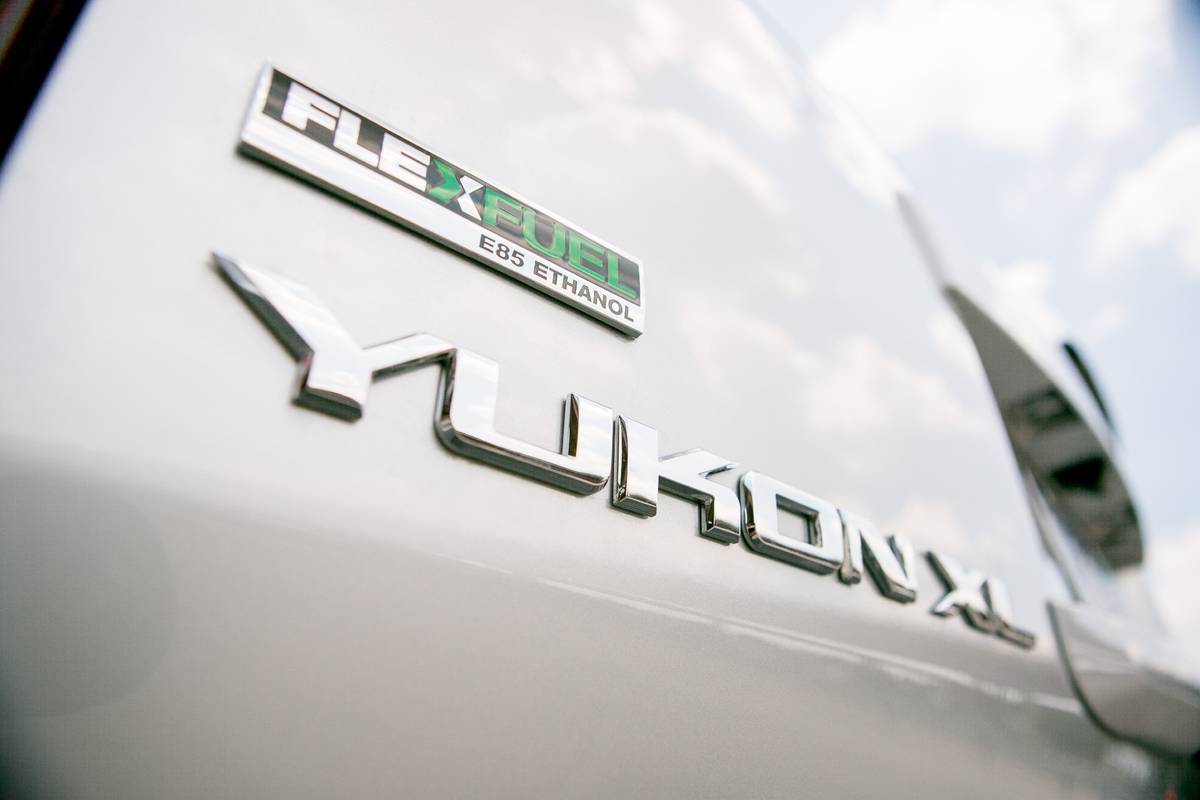What Is Flex Fuel?

Contrary to what it sounds like, “flex fuel” is not a powdered fitness supplement bodybuilders buy at GNC to amp up their clang-and-bang workouts. Flex fuel generally refers to a type of vehicle that is flexible enough to run on automotive fuel with a heavy blend of ethanol (a grain alcohol made from plant material) and gasoline, on straight gasoline or on any mixture thereof. You may also hear the fuel itself referred to as flex fuel, but we’re not on board with that practice for reasons touched on below.
Related: Another Reason Your Mileage May Vary (for the Worse): Ethanol
- ${price_badge()}
- ${battery_badge()}${ev_report_link()}
- ${hot_car_badge()}
- ${award_badge()}
- ${cpo_badge()}
${price_badge_description}
The EV Battery Rating is based on this vehicle's current expected range relative to the vehicles expected range when new. ${battery_badge_text}
Certified cars are manufacturer warrantied and typically go through a rigorous multi-point inspection.
This car is likely to sell soon based on the price, features, and condition.
${award_blurb}
${award_two_blurb}
Shop the 2019 Ford Escape near you


The most common form of flex fuel is E85. As its name implies, E85 is a blend of gasoline and ostensibly up to 85 percent ethanol, though actual blends are between 51 percent and 83 percent depending on where and when you fill up, according to the EPA. U.S. gas stations with E85 are plentiful in the Midwest but sparse in certain other regions, particularly the Pacific Northwest and New England. That shouldn’t come as a surprise, given the majority of U.S. ethanol comes from corn. Other countries have alternative sources; Brazil, for example, makes ethanol largely out of sugarcane.
Regular U.S. gasoline is typically E10, meaning it’s 10 percent ethanol. That isn’t flex fuel. The Renewable Fuels Association, a trade group for the ethanol industry that uses the term “flex fuel” to represent the fuel itself, calls anything that’s more than 15 percent and less than 83 percent ethanol flex fuel — but the Department of Energy approved E15 for use in all vehicles of model year 2001 and newer, including those not designated flex-fuel vehicles. (Putting a fuel designated as flex into a vehicle that’s not designated as flex is a slippery slope that reveals one shortcoming of using “flex fuel” beyond its designation for vehicles.) At some stations, you might find E51, E60 or E70 — which, as their names imply, have a respective maximum of 51, 60 or 70 percent ethanol.
Flex-fuel vehicles typically carry revised components that come in contact with the fuel, as well as updated engine software. They can take any blend from zero to 85 percent ethanol. All vehicles produced for the 2001 model year and since are similarly designed to operate on — and withstand the greater corrosiveness of — E15, but they aren’t capable of higher ethanol concentrations.
GM pushed flex fuel in the 2000s, touting E85 as a way to reduce U.S. dependence on foreign oil because it instead relied on domestic corn. But pure ethanol has some 30 percent lower energy density than conventional E10 gasoline, so running E85 in a vehicle that accommodates it will lower your fuel economy substantially. E85 is a bit cheaper than regular fuel — 12 percent less as of this writing, per AAA — but that typically isn’t enough to make up for the loss in gas mileage, which can fall roughly 20 to 30 percent in flex-fuel vehicles. Fill up on flex fuel if you’d like — but only if it’s really cheap.
More From Cars.com:
- How to Save Fuel
- 6 Things to Do When You’re Running Out of Gas
- Sorry, Fuel Savings on Diesel Pickup Trucks May Not Make Up for Cost
- If My Car Recommends Regular Gas, Is It Good to Use Premium Occasionally?
- Fuel Pump: What You Need to Know
- Gas-Saving Moment of the Day: Avoid E85
Cars.com’s Editorial department is your source for automotive news and reviews. In line with Cars.com’s long-standing ethics policy, editors and reviewers don’t accept gifts or free trips from automakers. The Editorial department is independent of Cars.com’s advertising, sales and sponsored content departments.
Featured stories




